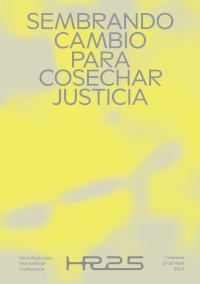There is a growing consensus to end drug prohibition. There is also a growing understanding of how prohibition is harming the environment and undermining climate governance and justice.
So, what are the alternatives?
Innovation and reforms in drug policy need to focus on reducing harm for everyone and everything involved along the entire value chain. People and landscapes in the producing and transit regions of the coca and cocaine market are often ignored, and their vulnerabilities - along with their skills - are rendered invisible.
How could innovative alternatives to the current illegal coca and cocaine trade enable both people and ecosystems to thrive? How could the principles of ecological harm reduction be applied?
A new coca and cocaine market must be designed with inherent stakeholder engagement to create a future that protects Indigenous and territorial rights, promotes sustainable livelihoods and agroecology, and delivers climate justice, while also reducing violence and corruption. This is no small task in the face of the climate emergency, but there is no time to waste.
Policy and law are often created in academic spaces or closed government rooms, where many perspectives are often ignored or missed. It is time to bring the design process for an alternative drug economy - one rooted in ecological harm reduction - into the civic and cultural space.
To do so, we need to inform and educate people about the production chain of this plant-based drug commodity and how it impacts different ecosystems and societies along this clandestine route.
The Drug Policy Reform and Environmental Justice International Coalition - a group of advocates, researchers, activists, artists, and journalists - has teamed up with VIST Projects and EasyDataViz to produce an interactive installation to design new drug policy. This installation will be launched at Harm Reduction International 2025 and is supported by the Kykteon Foundation.
This interactive installation will spotlight 10 human and more-than-human actors from 10 different locations along the production and transit regions of the coca/cocaine value chain.
The proposed methodology will serve two purposes: while communicating the overall socio-environmental impacts and intersections of coca/cocaine prohibition on 10 stakeholders, it will also allow participants to step into the shoes of different stakeholders, experiencing a variety of perspectives, and inviting them to use their own knowledge to dream and design an alternative future for all.
The data and designs will then be compiled into a new REFORM-RESTORE-RECOVER policy package and presented at COP30 in Belém, Brazil, in November 2025.




